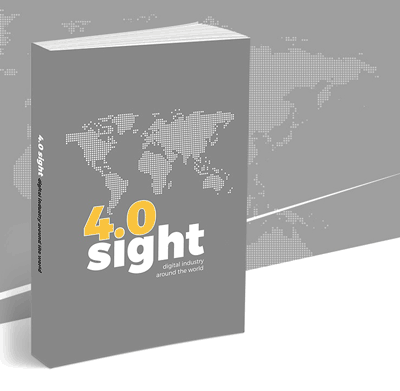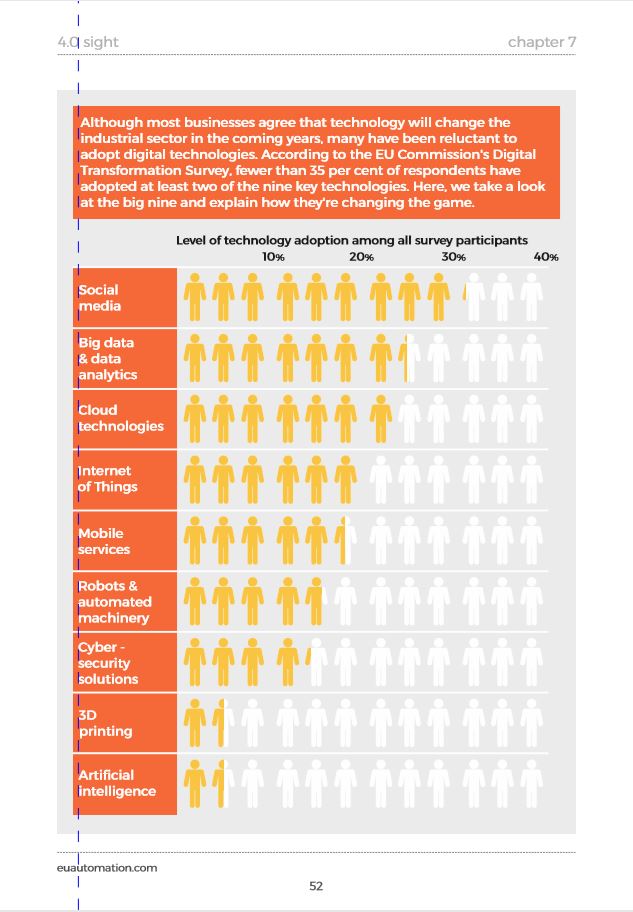
We hear a lot about Industry 4.0 or the fourth industrial revolution, but how many people are clear exactly what it means or its implications?
In a new book, 4.0 Sight – Digital industry around the world, Mark Proctor and Jonathan Wilkins, managing director and marketing director of industrial obsolete parts supplier EU Automation, aim to provide an international perspective.
“Technologies such as additive manufacturing, collaborative robotics, predictive analytics, artificial intelligence and virtual and augmented reality are set to disrupt, challenge and fundamentally change the way human beings work and communicate,” the authors say. 4.0 Sight “charts the digital journey for manufacturing industries in various countries around the world, looking at the key trends and challenges they face and what they’re doing to embrace the future of advanced manufacturing.”
They quote Klaus Schwab of the World Economic Forum in Geneva, who said: “The first Industrial Revolution used water and steam power to mechanise production. The second used electric power to create mass production. The third used electronics and information technology to automate production.” Now a fourth, digital revolution is building on the third, “characterised by a fusion of technologies that is blurring the lines between the physical, digital and biological spheres”.
The idea really took off after the 2011 Hannover Messe where three Germany engineers – Dr Henning Kagerman, Dr Wolfgang Wahlster and Dr Wolf-Dieter Lukas – published their vision of Industrie 4.0 – subtitled “with the internet of things on the way to the Fourth Industrial Revolution”. It explained the advent of a shift from centralised control over production processes, with engineers programming machines to turn raw materials into finished products, to an environment where processes used sensors to manage the best ways to turn materials into products.
Since then most of the industrial world has adopted some sort of Industry 4.0 strategy. The book looks at the UK, where productivity has still not recovered to the levels of before the 2008 financial crash, and the aims of the UK Government’s Industrial Strategy. On the positive side it notes: “Despite an overall fall in economic productivity, the UK manufacturing sector is thriving” and adds that it has great strength in advanced manufacturing sectors such as aerospace, pharmaceuticals, food and beverage and construction. These sectors, according to the government’s Made Smarter review of industrial digitalisation, have high growth potential.
Further chapters look at the situation throughout Europe, where the EU’s Digital Economy and Society Index in 2017 ranked Denmark, Sweden, Finland and the Netherlands as having the most advanced digital economies (Ireland and the UK were sixth and seventh respectively).
It looks at the various national initiatives or campaigns to encourage digitalisation and their different focuses, from Belgium’s MADE Different to Spain’s Industria Connectada 4.0.

It examines nine key digital technologies and their level of adoption in Europe. Further afield, the authors consider how the US stemmed a loss of manufacturing jobs, and set up the National Network for Manufacturing Innovation, modelled on the Fraunhofer Institute, to help increase its manufacturing competitiveness, and examine China’s ambitious “Made in China” plan.
Many would like to embrace digitalisation, but it is generally not possible to upgrade or overhaul the entire plant. The authors suggest, however, that an incremental approach could begin by retrofitting legacy machinery: “Old machines can be given a new lease of life by adding features such as internet connectivity, expandable memory or a protocol converter for interoperability between proprietary systems.”
The book is interspersed with interviews with industry experts, and ends with predictions of some of the automation and technology trends that the authors expect to become prevalent in the coming years, including modular automation, AR glasses, and the use of automated guided vehicles to create semi-autonomous production lines.
The book isn’t intended to be a “how to” guide to adopting digitalised technology wherever you work, but it’s a useful primer on the fundamentals of Industry 4.0 and how it’s being approached around the world.
4.0 Sight – Digital industry around the world can be downladed in PDF format from https://www.euautomation.com/4sight?utm_source=StoneJunctionEUI017&utm_medium=PR

